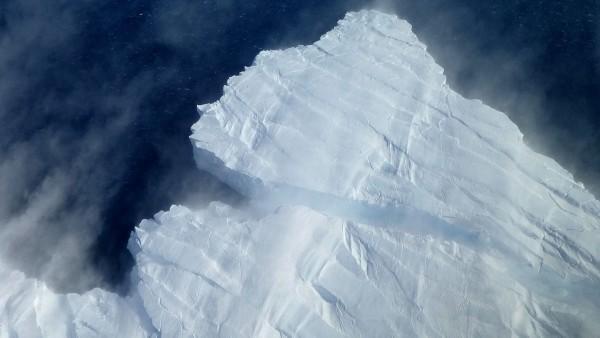It won’t take much to cause the entire West Antarctic Ice Sheet to collapse—and once it starts, it won’t stop. In the last year, a slew of papers has highlighted the vulnerability of the ice sheet covering the western half of the continent, suggesting that its downfall is inevitable—and probably already underway. Now, a new model shows just how this juggernaut could unfold. A relatively small amount of melting over a few decades, the authors say, will inexorably lead to the destabilization of the entire ice sheet and the rise of global sea levels by as much as 3 meters.
Previous models have examined the onset of the collapse in detail. In 2014, two papers, one in Science and one in Geophysical Review Letters, noted that the Thwaites Glacier, which some scientists call the “weak underbelly” of the West Antarctic Ice Sheet, has retreated dramatically over the past 2 decades. Most Antarctic researchers chalk this up to warm seawater melting the floating ice shelves at their bases; seawater temperatures there have risen since the 1970s, in part because of global temperature increases. Right now, an underwater ledge is helping anchor the glacier in place. But when the glacier retreats past that bulwark, it will collapse into the ocean; then seawater will intrude and melt channels into the ice sheet, setting the juggernaut in motion.
Scientists agree that this is going to happen, says Eric Rignot of the University of California, Irvine, lead author of the Geophysical Review Letters paper. “The real central question is the time scale.”
But most models have focused on short-term timescales, decades or a few centuries at most, says Anders Levermann, a climate scientist at the Potsdam Institute for Climate Impact Research in Germany and co-author of the new paper. He and climate scientist Johannes Feldmann, also of the Potsdam climate center, wanted to examine how the destabilization would progress in the longer term, over hundreds to thousands of years.
“The big question was how far [the instability] would reach inland,” Levermann says.
To study this, they ran computer simulations focusing on the dynamic forces that would act on the ice over time, from frozen inland ice to fast-flowing ice streams to floating ice shelves. They used the model first to simulate existing, observed subsurface melting within the Amundsen Sea, a region of West Antarctica that includes two vulnerable glaciers, Thwaites and the Pine Island Glacier. The model simulated current observations of enhanced, rapid melting until it recreated the current positions of the glaciers. Then they turned down the heat: They returned the model’s ocean and atmosphere conditions to those existing in the later 20th century, rather than the current 21st century conditions that have been causing rapid melting. “We wanted to show [how] it unfolds without us pushing it anymore,” Levermann says.
What they found was that local destabilization of the Amundsen Sea region of West Antarctica ultimately causes the entire ice sheet to fall into the ocean over several centuries to several thousands of years, gradually adding 3 meters to global sea levels, they report online today in the Proceedings of the National Academy of Sciences. The model shows that “there’s no holding back,” Levermann says: Just a few decades of melting leads to “thousands of years of ice motion.” More than 150 million people globally live within just 1 meter of the sea; in the United States, a sea level rise of 3 meters would inundate many of the East Coast’s largest cities, including New York and Miami.
Just a nudge could collapse West Antarctic Ice Sheet, raise sea levels 3 meters
Two Antarctic ice shelves on the verge of collapsing

